History Is Always Changing…
02/09/2024 - 11.54
Roger Slater
A big statement to make, and of course, it’s not actually true. What is true is that our knowledge of history is always changing and its faster than ever in a digital media age…but only if you accept the changes! (That’s not a dig at anyone directly, but there are historians who with the best will in the world write their factual histories and never re-visit them, no matter what information may come to light, as they are/were right).
I know from experience that an update based on new or newly discovered details can really change things…
I started researching my local football club in the late 1890s as the perceived Centenary was approaching. What I found was a little bit more history than we knew we had and I actually spent more than a year going right back into the 1880s to resolve the seeds and roots of the clubs that were to become Wealdstone FC. The history was duly published in 2002, but it’s been a live document on my PC ever since and it has been updated as more detail has been found and made available – some by a scan of sites like the British Newspaper Archive and newspapers’ own archives, and much on paper where particular records exist only on paper and microfiche. Suffice to say, there have been changes and updates and indeed, a brief history of the ‘Very First Wealdstone FC’ 1883-1896 has also been produced. Not quite a definitive record, but certainly 95%, the remaining few percent being missing statistics, line-ups and results, as, as I’m sure many of you will know, match reports in the late 1800s were rarely complete, often missing or incorrectly recording the actual scoreline, let alone goal scorers and such like. (If you are interested, a few copies remain, available here: https://www.wfcmegastore.co.uk/7-books-progs).
Oh! And I should say, if and when more information is found, it’ll be added and mistakes will be corrected. You see, I’m not a historian, I record history and build the story as best as I can from the information available at the time. That means I, like many others before me and no doubt after, can be wrong – mislead is probably a better word – so I’ll hold my hands up and correct mistakes if they occur.
And that is why I’m here writing this blog post.
I mentioned the Wealdstone club history. In that there is a page dedicated to those lost in the two World Wars. ‘Stones were one of the few clubs who had their own War Memorial, as reported in the Middlesex Advertiser & County Gazette on Friday 15th September 1922:
“Lieutenant-General Sir Francis Lloyd, who unveiled the Wealdstone Football Club War memorial on the club’s new ground, Lower Mead, Station Road, on Saturday week.
Sir Francis is here shown chatting to President of the Club, C. E. Brady, on his way to the platform from which he unveiled the memorial.
The memorial marble tablet, which surmounts the granite cairn and rests against the flagstaff near the pavilion and faces the main entrance to the ground, is shown on the left of the photograph. On it are inscribed the names of the ten club members who were killed or died on war service, the inscription being as follows; “1914 – 1918 In affectionate memory of Andrews, P. Bellchambers, C.F., Bird, C., Bowells, H., Bradberry. R.W., Cozens, W., Goodage, R., Howman, W., Martin, F., Robertson, J., Members of the Wealdstone Football Club who gave their lives for their country in the Great War. Patriae Amicum Armai Deus.”
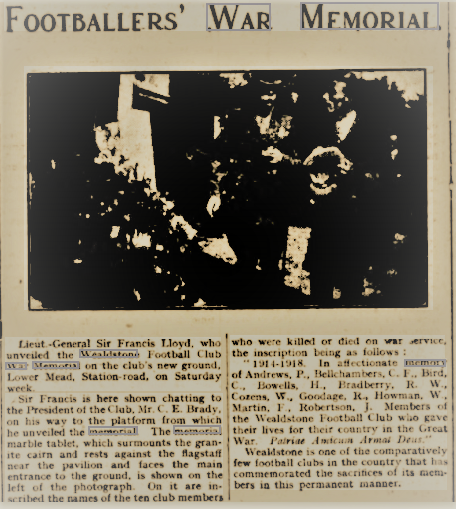
Source: Author's Collection
‘Had’ as the memorial was damaged and lost when the Lower Mead Ground was demolished in the early 1990s. (There’s a book to celebrate the 100th Anniversary of that ground on the same link as above). Three or four of us decided we’d like a new permanent memorial in our current ground in time for the 100th Anniversary of the Great War Armistice and as part of that process I started to research each of the names on the original…
The memorial itself is another story, but suffice to say, a stunning piece of stained and printed glass was built and is framed by a simulated Great War trench that I built – duck boards at the bottom, recovered French oak for the sides and some elephant iron across the top. It also included some barbed wire – English, French and German examples picked up field walking in northern France. There’s a picture at the end of this article…
Now. The names. I should say that post World War Two, those lost in that conflict were added to the Memorial, so I had sixteen names, ten from the Great War and six from World War Two. Many were simple to research as we knew more about them that just their names, such had been their tenure with the club. The first step though was to correct a couple of errors – Bowells was actually Bowell and Goodage R was in fact Goodege G R! Goodege had been known as Dicky as a player but his military record and ancestry.co.uk proved in fact he was George Richard, so that was amended. I also checked the Wealdstone (Town) War Memorial, where lo and behold, the same errors had been made. While there, I also came across another name I knew – F Farmborough. I knew the name as two F Farmborough’s had played for the club in the formative years, one in the mid-1890s, and the second at the turn of the century. A check of the club records showed that one had been a forward and the second, a goalkeeper, so they weren’t the same man.
Back to census records, electoral roles and such like on ancestry.co.uk and I found that there were two Farmborough families in Harrow at the time, both headed by a Fredderick Farmborough and by dates, the player from the 1890s would have played for the club in his mid-twenties, the lad from the turn of the century (from memory) was about 21 when he made his handful of Reserve and one First Team appearance for the club. Back to Forces War Records and I was able to match the ages finding that the lad from the turn of the century had indeed been killed in action at Kut and he is remembered on the Basra War memorial, adjacent to Dicky Goodege whose name appears two places below. His single appearance perhaps had been overlooked when the original memorial list was drawn up in 1919-20, but Fred Farmborough does indeed now appear on the new Memorial. (Incidentally, there were errors also with a World War Two name – T W Winterbotham on the memorial, this has been proved to be Thomas Winterbottom, Killed in Action in the USA – also amended – and there was a further missing name, that of Robert Wilson. He had been the star player for the club in the Middlesex Red Cross Cup Final at Wembley Stadium in 1942 and he served in the RASC. Sadly, he became ill and died in Edgware Hospital in January 1943. He is buried in Wealdstone Cemetery under a CWGC Headstone, but it seems he was omitted from the list post World War Two as he had died at home rather than overseas. He has also been added to the new memorial.
With one exception, the remaining names from both wars were easily identifiable, but that ‘one’ is the real story here.
C F Bird. Simply, there was no record of C F Bird at the club, nor was there a Military Record online, so the search was simplified with the middle initial removed. Club records had a Charles Bird who made one appearance in 1911. Nothing else was known. ancestry.co.uk and electoral rolls threw up TWO Charles Bird’s in Harrow, both born around the same time, both killed in France in 1918, one dying in a Casualty Clearing Station near Le Cateau in December 1918, the other buried in the Perrone Communal Cemetery Extension having been killed in action on 31st August 1918. Our search was over – it had to be the lad at Le Cateau as the other was an Australian Infantryman…
The details were added to the Memorial list over 12 months before the 100th anniversary. As it turned out, luckily.
With the Match Programme team, I produced a booklet for inclusion with the match programme for our home game near Remembrance Day in 2017. It was well received and added to our overall depth of knowledge and the booklet was also reproduced and published online on the Wealdstone FC History website.
Early January 2018 with the memorial stained glass literally about to start production I received an email. It was a from “Richard” who stated that he had read the memorial booklet online and thought he could help clear a couple of possible errors. It turned out he was the step-great nephew of Charles Bird’s wife, Elsie.
I was amazed, not least that he had got in touch and we communicated via email for a couple of weeks checking dates and history – me online, and he from family records… The first thing was, I had started in the right place and I had identified the right Charles Bird in terms of his date of birth and his appearance as a 17-year old in the Wealdstone FC First Team. Indeed, Richard sent an alternative version of the team photograph from 1912-13 which shows Charles Bird in the line-up.
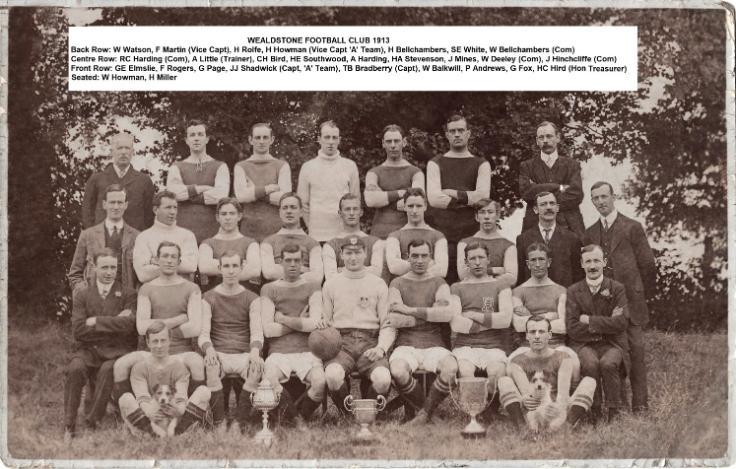
Source: Author's Collection
The picture also features a number of other ‘Stones who lost their lives in the subsequent war, but there, third left centre row is Charles Henry Bird. As the only Bird recorded in the club, we have to assume he is the Bird mistakenly recorded as C F Bird on the original memorial.
Richard also confirmed the story of Charles Bird as not the person who died in the clearing station at Le Cateau, but as the Charles Bird, Killed in Action at Péronne. The Australian Infantryman!
As we can now confirm, Charles Henry Bird was born to father Charles (33), mother Frances (22) and he had an older brother Sid who was two. His parents were to go on to have nine children in total. In his early years the family moved between Wealdstone, Kilburn and Birmingham before returning to Wealdstone, where Charles made a single first team appearance for Wealdstone FC as a 17-year old, though it seems he had also represented the club as a Junior player.
In 1913-1914, he emigrated to Australia to join other members of the extended family, with the intent that his future wife, Elsie would join him once he was settled. Having both worked at Kodak in Harrow, Charles found work as a boundary rider in New South Wales until the outbreak of war.
In early 1915, Private Charles Bird joined the 18th Battalion, Royal Australian Infantry, part of the 5th Brigade, based in Liverpool, New South Wales. In May, embarking for two months training in Egypt before being sent on to Gallipoli. By March 1916, they had moved on to Northern France and Charles was awarded leave in April, returning to Harrow to marry Elsie, who had, due to the outbreak of war, remained living with her parents.
Charles returned to France and fought in the Battle of Poziers, part of the Somme offensive though returning once again on leave to England and his wife in September/October 1916. He then returned to France for the last time, rejoining his unit fighting in many major battles prior to involvement in the German Spring Offensive of 1918, repelling the Germans in the Battle of Mont St Quentin. He was killed in action on 31st August 1918 in Péronne, Somme, France, at the age of 25, during the assault on Mont St Quentin, hit in the neck by a piece of shrapnel whilst seeking cover in a poorly maintained trench, and he bled out in the dressing station. He is buried in the Péronne Communal Cemetery Extension, Grave ref IV.B.10.
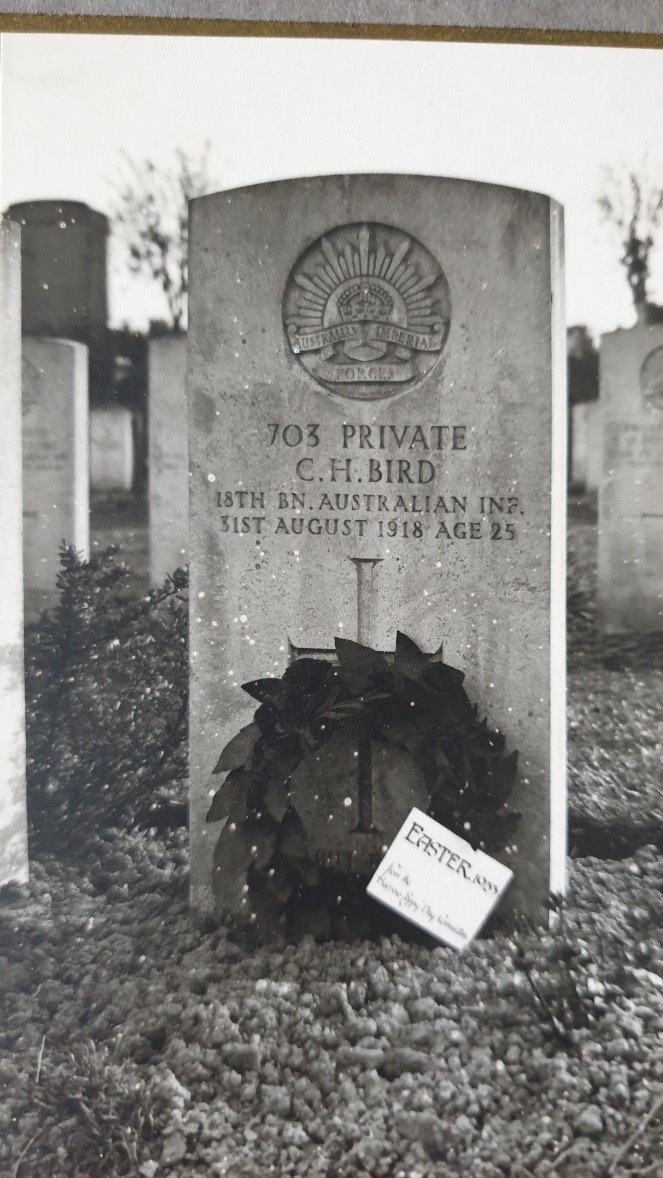
Source: Author's Collection
Elsie gave birth to their son Ashley Charles Bird on 28th June 1917 and remained in Harrow, later re-marrying though her family and that of Charles Bird in Australia lost touch.
Younger brother Frederick Bird served with the Middlesex Regiment, 16th Battalion, as the Battalion Drummer and Bugler (Private). He was also killed in The Great War, having died of his wounds as a 17-year-old on 28th January 1916. He is buried in grave reference L.20 in the Chambrin Churchyard extension.
Our and indeed Charles’ small part in history had changed, and the new details were added to the new memorial just in time for the presentation to the club. Even though not all of the details are known about the service of ‘our boys’ I don’t think there are any more errors or loose ends to tie up, but never say never. The documents remain open and ready to modify if the need arises and our history changes once again…
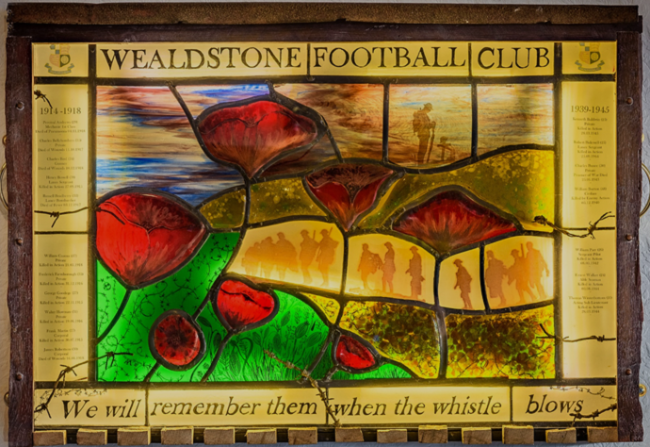
Source: Steve Foster - @aqueoussunphoto
Biography
Roger Slater was born in Harrow in the late 1950s and has moved around a bit and retired to Devon with wife of 24 years, Helen. He originally trained as an Electrical Engineer but worked for almost 40 years in Building Services Technologies, primarily HVAC control systems and Electronic Security. Roger retired in 2018 having run his own Engineering Consultancy for almost 15 years.
For relaxation and hobbies, he writes, mainly about his football club, Wealdstone FC and has published eight books including a club history since 2002. He does not class himself as a historian, just an enthusiastic amateur.
He also writes for a fanzine/magazine called Where’s The Bar that has just relaunched.
Otherwise, hobbies are upcycling and building ‘strange’ lighting out of people’s rubbish and occasionally painting, though he also buys and sells at auctions and on the internet (mainly football related or antiques).
In respect of other sports, he will watch most but follows the Toronto Blue Jays avidly in baseball, as a result of working on and off in Canada in the early nineties.
Roger also reads and collects books on World War One, in particular personal biographies and war diaries as opposed to battle histories…
All of that could change tomorrow or on any other day if something else takes his fancy as he will give most things a try if they appeal!
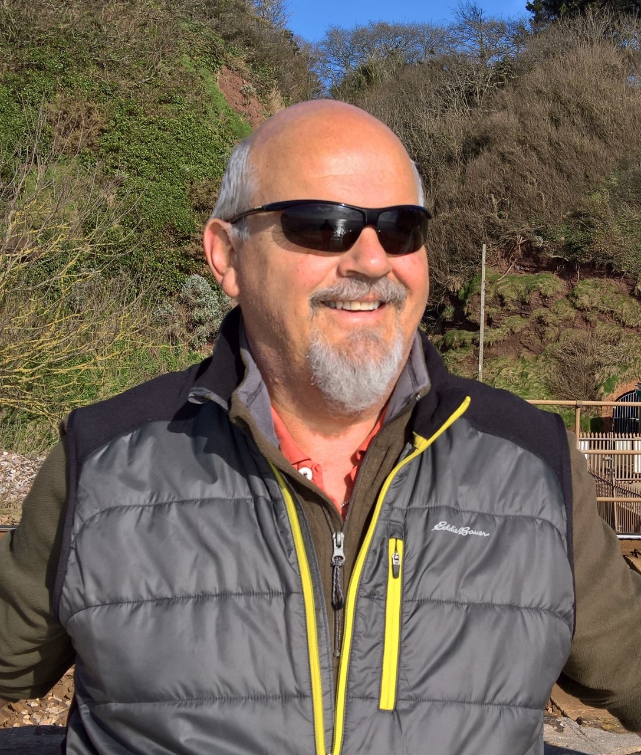


/prod01/wlvacuk/media/departments/digital-content-and-communications/submitted-news-images/Smelting-knife.png)
/prod01/wlvacuk/media/departments/digital-content-and-communications/images-2024/250630-SciFest-1-group-photo-resized-800x450.png)
/prod01/wlvacuk/media/departments/digital-content-and-communications/submitted-news-images/Way-youth-zone-August.JPG)
/prod01/wlvacuk/media/departments/digital-content-and-communications/images-2024/Arthi-Arunasalam-teaser.jpg)
/prod01/wlvacuk/media/departments/digital-content-and-communications/submitted-news-images/Muslim-woman-playing-football.jpg)
/prod01/wlvacuk/media/departments/digital-content-and-communications/submitted-news-images/Business-School-800x450.jpg)
/prod01/wlvacuk/media/departments/digital-content-and-communications/submitted-news-images/University-of-the-Year.jpg)